


47. South Fork Crooked River. Full round limb cast, cut and polished on one end and natural on the other. The face is pink agate with woody fossilized debris at the geopedal bottom. The back is all natural and full of interest. 7 by 7 cm mirror-polished face; 5.5 cm long; thirteen ounces. $1200





48. South Fork Crooked River. Full round limb cast, cut on both ends and polished on the top. I’ve had this many decades as it’s a favorite. Abundant interest, perfection, and character. Old-time surface-collected piece. Figures in Ancient Forests on page 221. 8 by 5 cm mirror-polished face; 7 cm long; one pound and seven ounces. SOLD
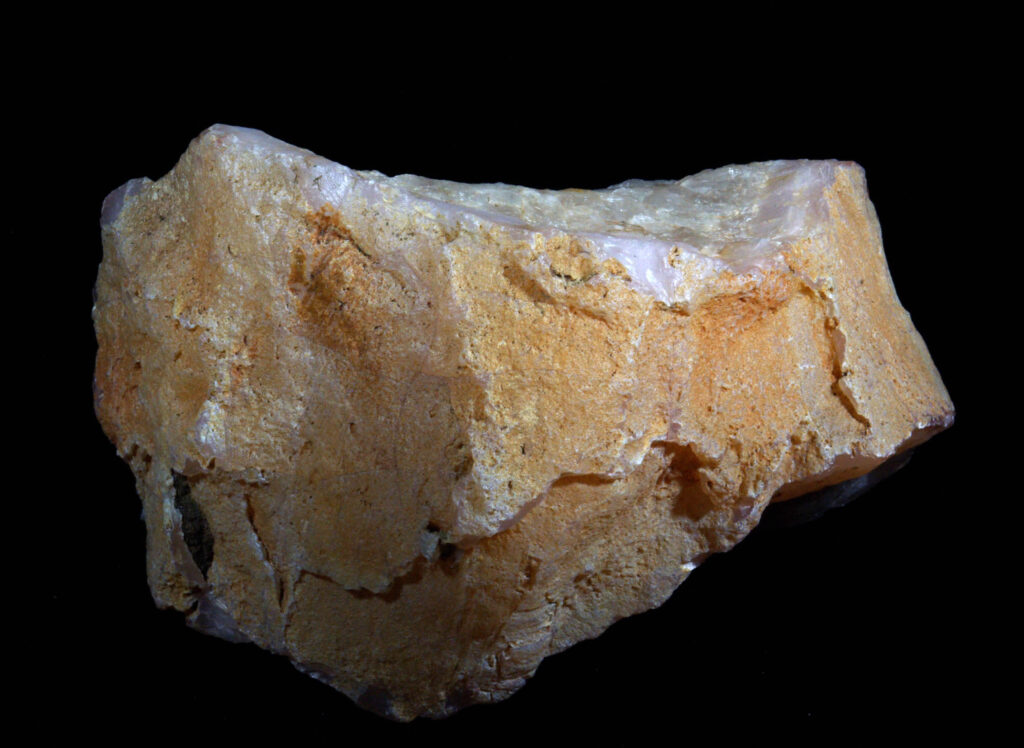


49. Big Pink. South Fork Crooked River. Huge and quartzy. 20 cm across the mouth of the horseshoe; by 16 cm; by 13 cm thick; eleven pounds and six ounces. $500



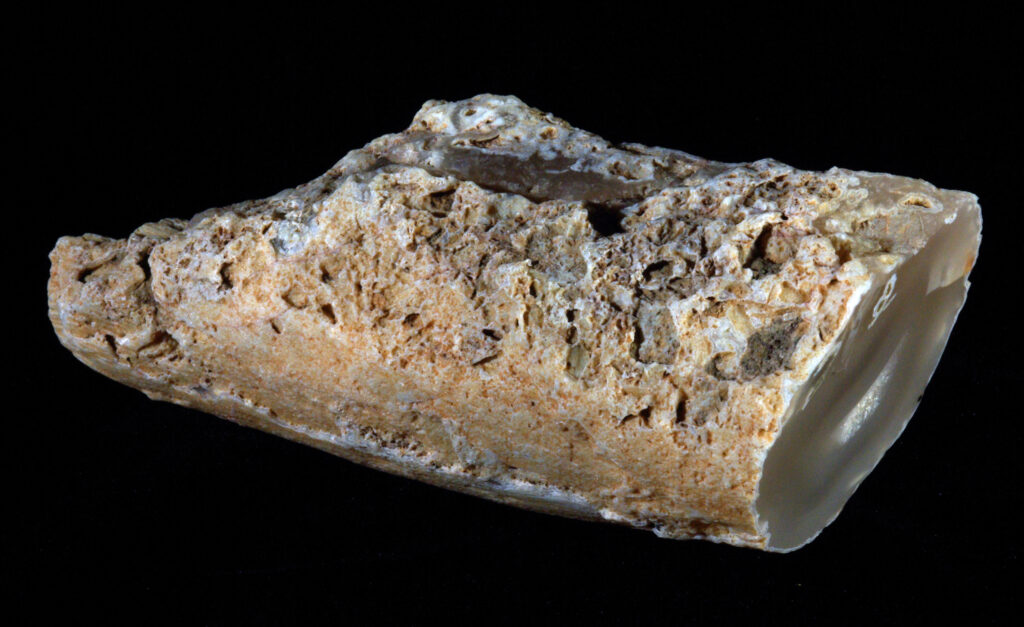


50. South Fork Crooked River. Full round limb cast, cut and polished on one end and natural on the other. Bits of permineralized wood appear at one edge as if they sank there, all within bluish to yellowish gray concentric agate. About perfect. Looks like a piece of wood made from glass, which is pretty much what it is. Nice eye appeal. An exceptional piece for all the right reasons. Perfection, beauty, and awe – The exterior wood impression shows the wood had been abraded prior to fossilization thirty million years ago. Also, exceptional here is the color of the patina—something of a yellow/ochre that lends the whole piece a rare and beautiful yellow/ochre brightness. Excellent museum specimen size. It figures in Ancient Forests on page 219. 7 by 5.5 cm mirror-polished face; 18 cm long; two pounds and seven ounces. $1600

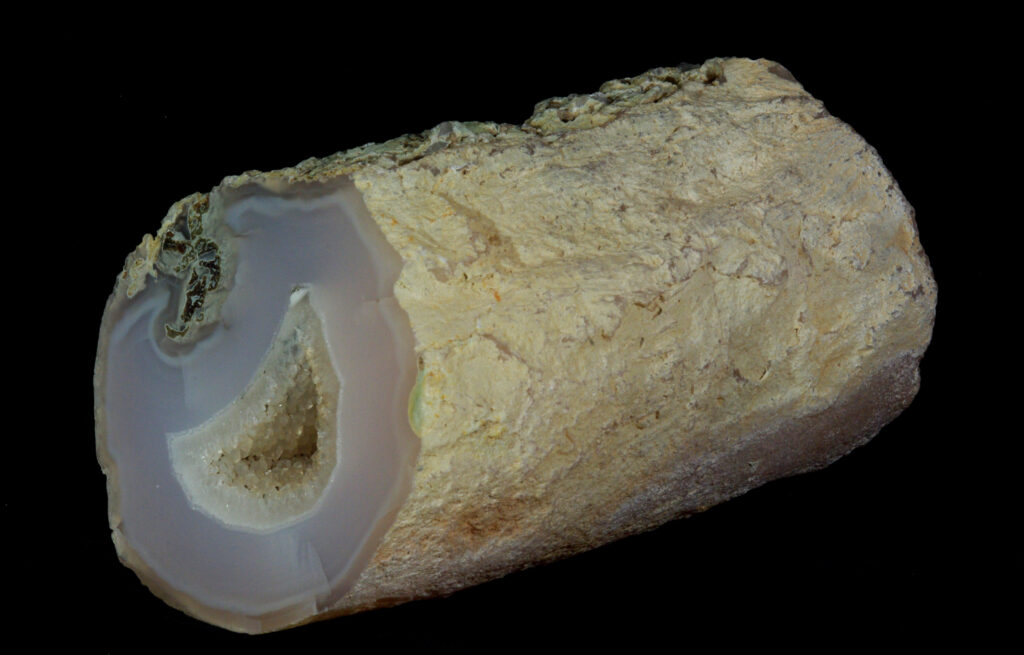



51. South Fork Crooked River. Astounding pink limb cast from the South Fork of the Crooked River, Crook County, Oregon. John Day Formation/Oligocene. The pink has an unusual tone of blue which adds to the intensity of the color. The mineralization is incredible with a crystal lined center surrounded by thick banded pink-blue agate. It is a full round, cut on one end and natural on the other. At what was the primordial lower side resides a pocket of green permineralized wood. Although a limb cast, wood fibers sank to the bottom as the rest of the wood was replaced by agate. This one is incredible from all aspects – the gem quality of the mineralization, the lovely smooth exterior, the smooth natural end, the depth and intensity of the color. It has it all. I have seen many Crooked River limb cast specimens, but only one this great. It is a perfect as they get. It came from the collection of an old-time Oregon rockhound and rock dealer. It appears in Ancient Forests on pages 219 and 220. It is 16 cm long; the mirror-polished face is 11 by 10.5 cm; weight is five pounds and two ounces. It’s a piece that could be from nowhere else. The South Fork of the Crooked River is a location with unique fossil wood. It will be immediately recognized as a South Fork piece by any knowledgeable fossil wood enthusiast. $5,000




52. Oregon Osmunda. Clarno Formation, Eastern Oregon. Rare. Strictly from a small deposit near Antelope, Oregon. An unusually large full round end cut with well-preserved cell detail and a complete center stele. Attractive exterior with salmon patina – identification obvious from the natural end. 10 by 6 cm mirror-polished face. 27 mm thick; ten ounces. SOLD
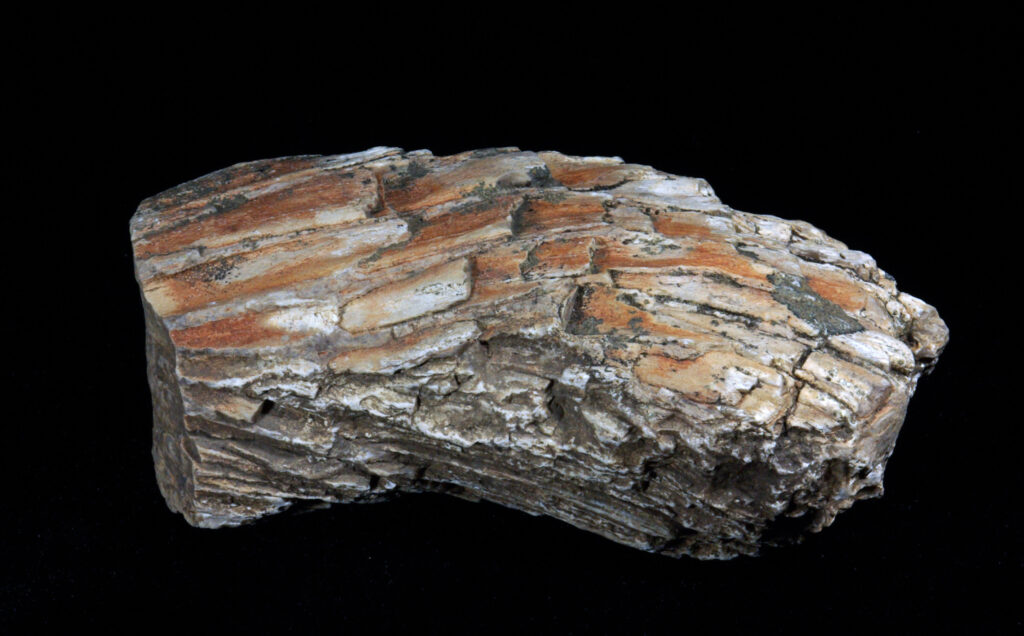

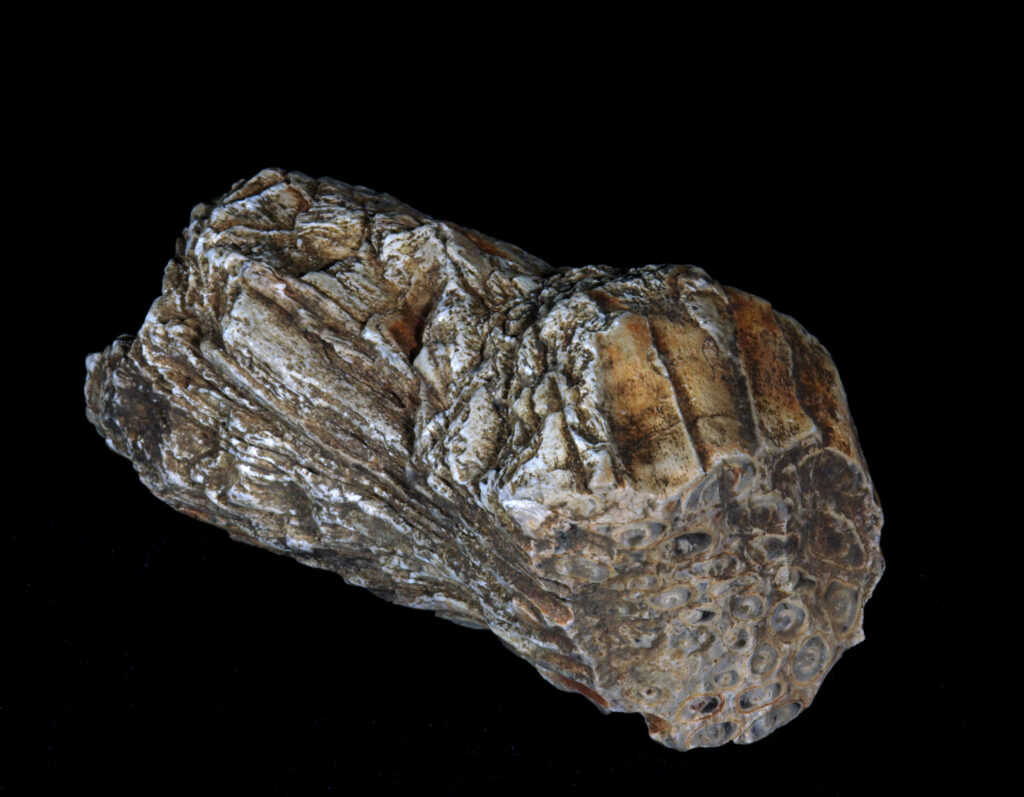
53. Oregon Osmunda. Clarno Formation, Eastern Oregon. Full round complete stem – all natural. Wonderful salmon-patinaed sun-bleached exterior and overall obvious fern structures. Collected half a century ago or more. Top eye appeal. 4.5 by 5 cm girth; 106 mm long; twelve; ten ounces. $1500

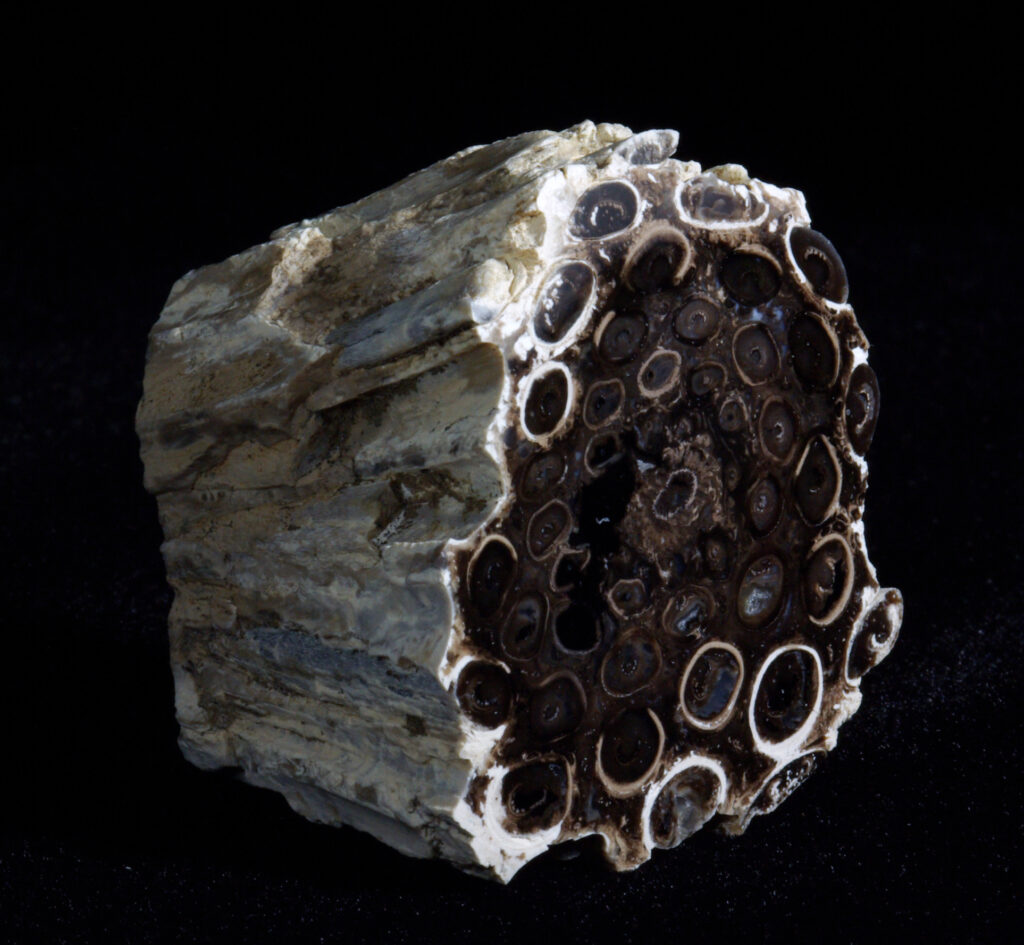



54. Oregon Osmunda. Clarno Formation, Eastern Oregon. A full round stem, cut on one end and natural on the other. Stunning white circles on dark background. Excellent cell preservation. 48 by 62 mm mirror-polished face; 45 mm thick; six ounces. $800


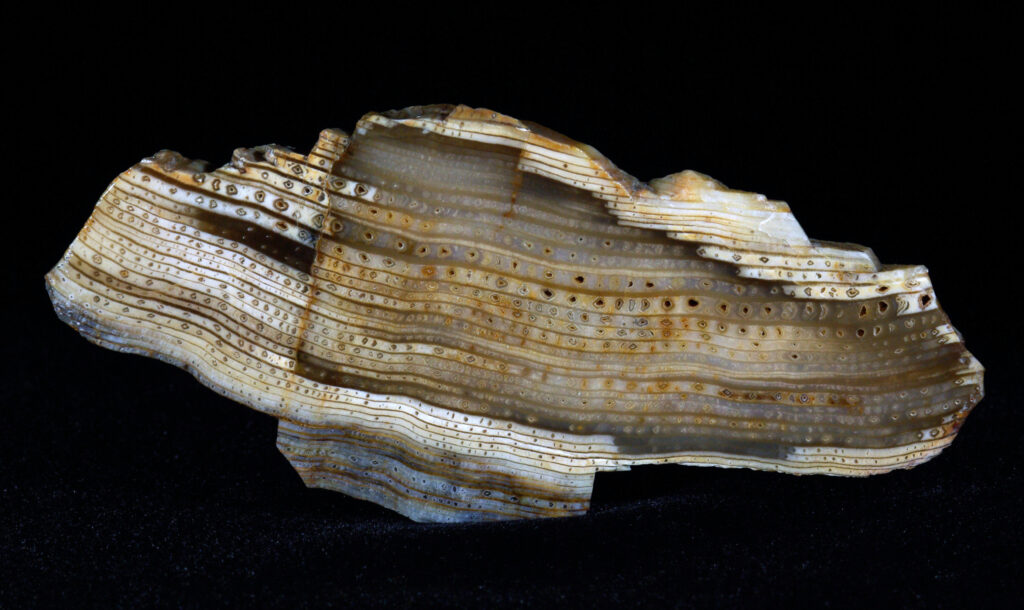
55. Ribbon wood or bacon wood, one of the old-time Oregon rockhound special pieces. Central Oregon. Similar wood is found in Washington State and Idaho. Specimen round, cut on one face and otherwise all natural. Both the polished and untouched, deep patinaed side are incredibly interesting and attractive. Formation requires coniferous wood that compresses along the way to becoming stone; consequently, ladders of tracheids buckle into diamond shapes and create voids that infill with agate, more or less, probably. Amazing under magnification. 5 by 13 cm mirror-polished face; 23 mm thick; six ounces. SOLD
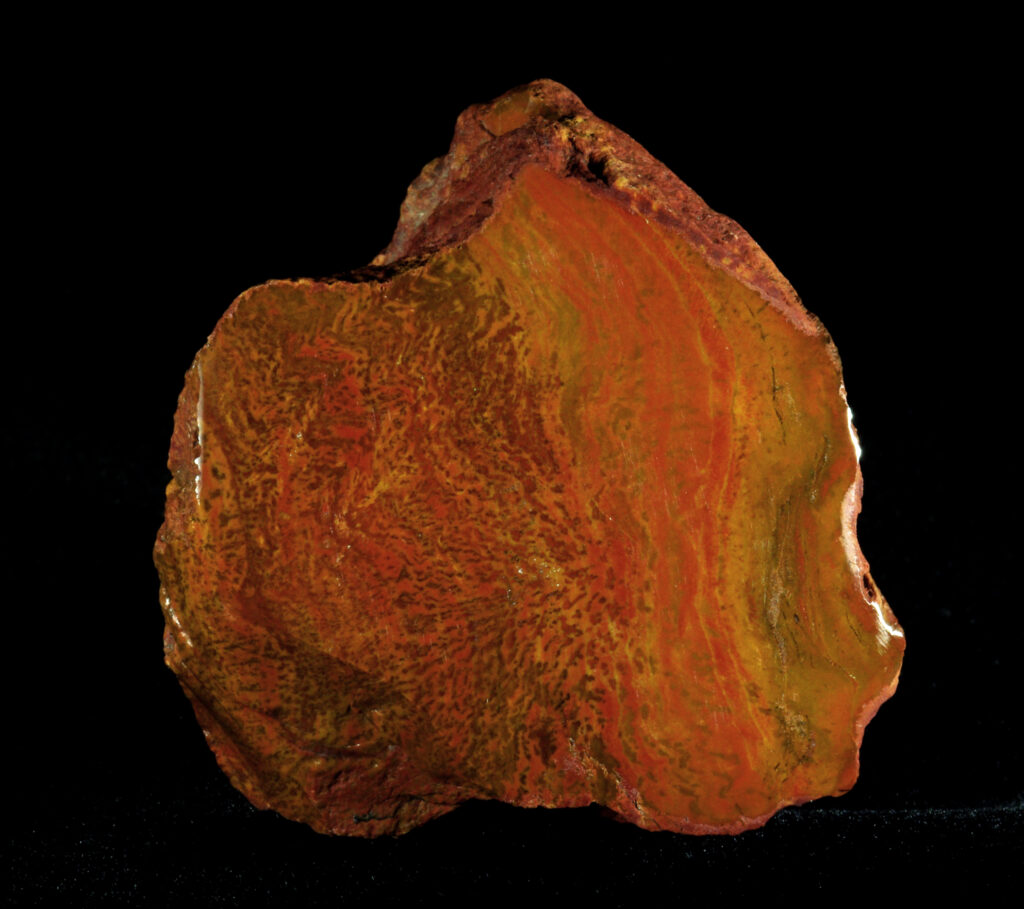



56. Probable Eastern Oregon specimen round – a stunning piece with structures shifted to another realm – one of beauty and confusion. 6.5 by 5 cm mirror-polished face; 9 cm long; one pound and one ounce. SOLD



57. Owyhee Mountains, Specimen round – conifer. One of the more colorful woods found in Oregon – normally found in hunks of what was a large tree. Glassy and attractive with a pleasing exterior. 6 by 4 cm mirror-polished face; 4 cm thick; seven ounces. $400
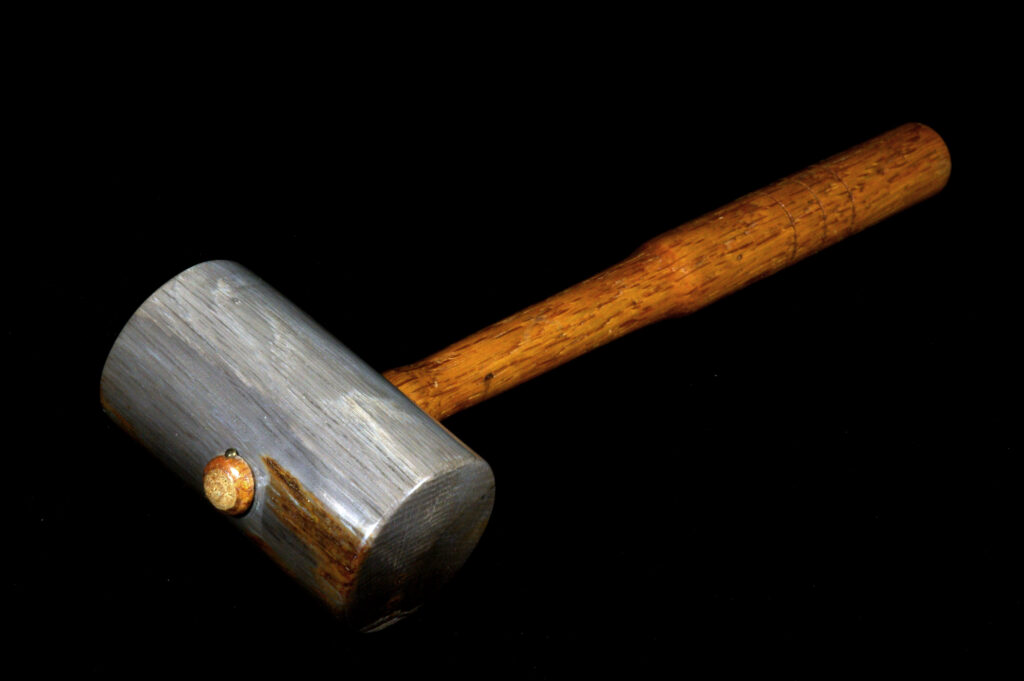



58. Oregon or Washington oak hammer. Rockhound artifact. The old-timer PNW wood collectors had abundant great wood at their disposal. The fifties and sixties were also the golden years for lapidary equipment manufacturers and dealers. Rock Clubs were popular all over the West. I sometimes bemoan how much top grade wood was cut to make bolo ties and belt buckles, yet I too am guilty, having made several wood bolo ties at my club: the Grand Junction Gem and Mineral Club, established in the 1940s. 3.5 cm round by 6.5 cm long hammer head. 9 ounces total. $300
Click for Oregon, page 5
